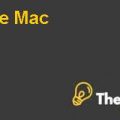
RENAULT TRUCKS:
REMANUFACTURING AS A STRATEGIC ACTIVITY
Company’s Background
History
In 1884 Marius Berliet developed a design of a single cylinder engine. At the same time, he also manufactured his single cylinder engine and came up with his first ever petrol driven car. After the struggle and dedication of many years, he came up with his truck in 1906. At the same passage of time, Louis Renault introduced the first commercial car. During the decades between 1952 and 1974, many forces joined hands with Berliet. These forces included: Rochet, Citroën Poids and famous Camivad. Saviem came into existence back in 1955 by the merger between Renault Trucks and Somua. In 1978 there was a dramatic boom in the industry by the merger of two big players, Saviem and Berlit that resulted in the creation of RVI (Renault Vehicles Industries). Renault Vehicles Industries continues to focus on international expansion by acquiring the American Brand Mack and Dodge Europe back in the year 1990. By the year 1992, it renamed itself as the Renault VI and by the year 2001 it became a part of the Volvo group by obtaining around 20% of its shares and having some preventative rights on its equity. In the same year, they came up with new international name of “Renault Trucks”.
Development and Growth
Renault Trucks has made his presence possible in around 80 countries across the globe via different components likes sales and service centers, different subsidiaries and importers that were across the globe for the effective delivery system. There were 15000 people employed in Renault Trucks, which reflected themselves as a gigantic organization. They were quiet strong in the European market because of their tremendous number of 1500 sales and service centers. In Volvo Group, the Renault Trucks were found the largest at second number in terms of business area. In 2007, they produced 57,000 trucks. Europe and France was the leading sales arenas for Renault Trucks and it had a share of 44% each, followed by other international regions thatt comprised of 12%. Renault Trucks offered a wide range of trucks to their potential customers, which include both heavy and light trucks. Additionally, they also manufactured the military vehicles that add value to their optimistic vision. Experts in the industry present a statistics related to the remanufactured parts usage and said that less than 3% of the trucks and cars across globe comprises of remanufactured components.
The Issue
Being the industrial manager in June 2001, Mr. Jean-Franois Hilico was asked to recommend a development strategy to the board of Renault Trucks for further improvement in the remanufacturing business. The main purpose for this remanufacturing business is that they rebuild the used parts at a very low cost and make them usable for a longer period of time by meeting the standards. There were overall three options out of which one has to be recommended. The main aspect that needs to be focused is that the factor of profitability should not be highlighted. They need to consider different issues like safety, environmental safeguard, and other complications while working on the already used parts. Pros and Cons needs to bring in considerations for all the three possible options so that the best possible option can be selected. The three options include outsourcing the specific job to a third party, enlarge and streamline the overall processes in the current plants and build a completely new plant.
Internal Strength and Weaknesses Analysis
- Employee and Established market
There internal strength was entirely based on different factors in which they look for a competitive advantage. These strengths include resources like physical, human and strong financials. As mentioned in the case, they are having a vast pool of employees that comprises of 15,000 people. There vast network can also be the part of their strength because there are present in around 80 different countries. They have a massive number of 146 dealerships out of which 32 are present in the French market.
- Financial Perspective
Its financial figures were at a relatively high degree considering the large turnovers in its overall sales. According to the case, Renault Standard Exchange parts income had touched a mark of $64 million with an overall margin of around $19 million by the year 2000. These figures were equivalent to 170,000 units that were sold. In a similar pattern, its overall turnover from its parts business throughout the same period was around $488 million with an overall margin of $192 million.
- Effective Research & Development Practices
There continuous success reflects that they are technically sounds. Furthermore, switching from manufacturing to remanufacturing, Renaults Trucks activities and different procedures without a doubt showed and witnessed the remarkable success in the industry of trucks and ............................
This is just a sample partial case solution. Please place the order on the website to order your own originally done case solution.
In June 2001, Jean-Francois Hilico, commercial project manager at Renault Trucks, was to recommend its board business strategy recycling truck company. Processing consisted of the refurbishment of used parts to bring them to a level of performance below that of the new, at a much lower cost. After analyzing the pros and cons of the three investment options, participants are asked to make a recommendation. This event invites participants to take into account other investment criteria is not only cost-effective, such as the environment, safety, and the competitive effects of the proposed rebuilt parts. He added the truck Renault secondary production activities. "Hide
by Benoit Leleux, Henri Bourgeois Source: IMD 17 pages. Publication Date: July 21, 2005. Prod. #: IMD294-PDF-ENG













